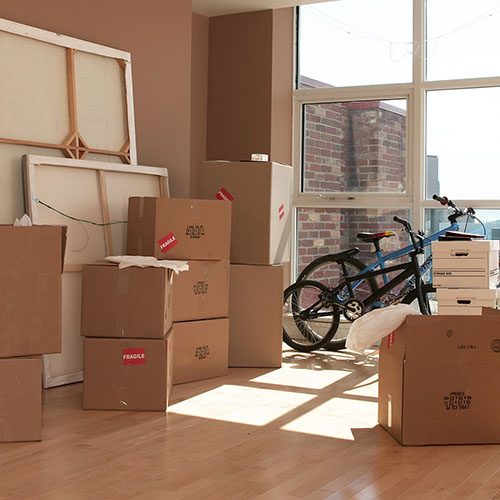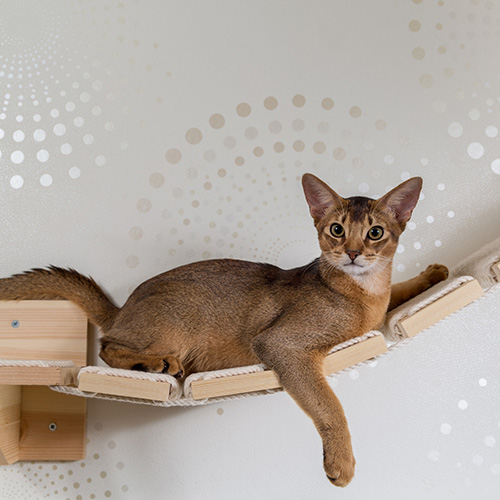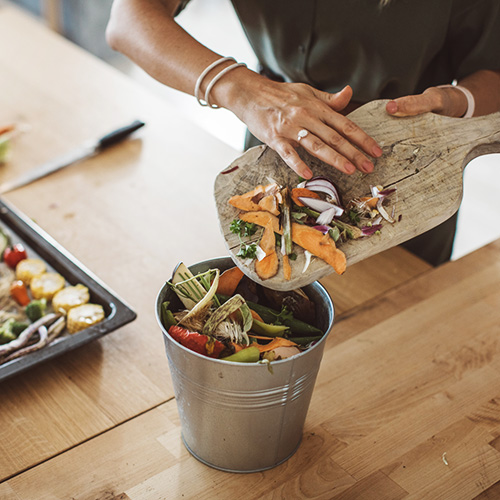A Cheat Sheet to Puppy Proof Your Home

Congrats on adopting your new puppy! Welcoming home a little furry friend for the first time can be exciting and terrifying all at once. You may be thinking, "Did I buy enough toys? How many times should I feed them? Will they get along with my other pets or kids?" among countless other important questions. Once the fear subsides though, you're left with a cute little pup that loves you unconditionally, and the nerves are all worthwhile.
Just like bringing home a new baby, you have to prepare your house to make it the most inviting and safe environment for your puppy to thrive. Puppies are curious and fearless by nature, so you'll need to steer them clear of coming into contact with anything that could pose a threat to their safety. We're here to help you thoroughly examine your home through the eyes of a dog and eliminate any dangers that may exist for them.
Puppy Proofing Time!
Puppy proofing your home can include everything from tucking away any loose belongings that could become a chew toy to getting rid of plants that are toxic to animals.
Examples of things to look out for:
- Unprotected cords and cables
- Easily accessible trash cans
- Toxic substances
- Possible chew toys
- An escape route to the street
The first step in puppy proofing your home is to cut off access to anything that could create a mess or cause injury. This involves putting away loose items and closing off access to anything your dog may be able to poke their head in. Just like when your baby starts walking, and everything needs to be protected from their curious hands, your curious pup will try to stick their nose in everything.
In the living room and bedrooms, hiding any visible cords is a simple way to prevent your puppy from chewing through them and getting an electric shock or ruining your electronics. There are a variety of creative ways to tuck cables out of sight, so finding one that works with your aesthetic is definitely possible. Examples include collecting cables in a chew-proof box, using cord concealers along the floor, or investing in some PVC pipe to feed the cables through. However, as with children, your puppy is going to try to get access to it anyway, so also make sure that you keep an eye on your puppy.
For the kitchen and other storage areas, childproof locks on cabinets, drawers, and door handles may be beneficial. Oftentimes, cleaning supplies are kept under the kitchen sink or in a cupboard not far away. If your puppy is able to gain access to this area and ingest any of the cleaning chemicals you may have, they could become very sick very quickly. Childproofing their point of entry may not stop them from trying to open the cabinet door, but it will definitely slow your puppy down and give you the chance to train them on the spot.
Aside from cleaning supplies, there are other items in your home that could potentially be dangerous for your new pup. Although they do not pose a risk to humans, many household plants contain toxins that, if consumed, could make your dog very ill. The ASPCA has compiled a list of plants that could be a threat to your puppy’s health. If you have a cat and use a litter box, make sure that it is not easily accessible by your curious pup. Ingesting the contents of your cat's litter box can result in serious health issues and also can allow illness to be spread from your cat to your dog. Keeping the litter box behind a baby gate can give your cat easy access while keeping your dog out.
In addition to creating a mess, your dog getting into your trash poses an additional risk of them eating something harmful. Bathroom trash can be full of tissues and plastics, as well as items that pose more of an immediate threat such as disposed razors. In the kitchen, food trash can be a serious concern for your puppy's health. Chocolate, grapes, and fruit seeds are just a few examples of food that can be dangerous if consumed by a pet. In the bathroom, it may be wise to store your trash can out of reach of your puppy. Meanwhile, purchase a kitchen trash can that has a lid, and one with a locking lid could make it even more difficult for a snooping puppy to have a field day with its spilled contents.
When there are toys, shoes, magazines, and other everyday items strewn about the floor, your puppy will be tempted to use whatever it can find as a chew toy. Keeping your home tidy is an often overlooked aspect of puppy proofing. Putting things away can make it that much more difficult for your pup to access small items that could become a choking hazard, as well as things that could cause harm if ingested. Another common object that is the victim of your puppy's curiosity is furniture. They will try their hardest to tear apart couches, pillows, and chairs, leaving your living room looking... like a new puppy was just let loose! Investing in pet-proof covers will be worthwhile if you aren't planning on purchasing a new set of furniture every few months. Although they may not be the most attractive part of your living room, once your puppy is trained you'll be able to enjoy your beautiful decor once more.
Puppy proofing your home is not limited to indoors. What would happen if your dog was able to run out the front door while you weren’t looking? Without some kind of fencing around the perimeter of your property, they could run as far as their tiny heart desires. Installing a fence can deter your furry companion from getting too far when they want to escape. Since there are many types of fencing, keep in mind that you should have one that is tall enough to prevent your dog from climbing over it, while also secure enough to prevent your puppy from digging a hole underneath.
Puppy Proofed Home: Check! Now What?
Now that you're all ready to welcome a puppy into your home, the next step is training. Practicing good behaviors goes hand in hand with your puppy proofed home. It's important to reinforce good behaviors and prevent bad behaviors from becoming a habit. Blue Buffalo offers some helpful tips on how best to train your new pup, such as avoiding emotionally charged reprimanding sessions, staying consistent with treatments, and being proactive about catching bad behaviors. They share, "You must be one step ahead of your chew-curious pup and be ready to redirect him. With all of your preparations, the best way to do this is to keep a watchful eye over them and be ready to intervene at any moment.
Above all, providing your puppy with a loving environment is the best way to take care of them. While discipline is necessary to form positive habits, there is never justification for any kind of verbal or physical abuse in your relationship with your dog. Armed with this knowledge, you can be prepared to raise a happy and healthy dog that will stick by your side no matter what!
References:
https://www.aspca.org/pet-care/animal-poison-control/toxic-and-non-toxic-plants
https://www.petcoach.co/article/puppy-proofing-your-home/
https://www.preventivevet.com/dogs/checklist-for-puppy-proofing-your-home
https://www.caninejournal.com/how-to-puppy-proof-your-house/



